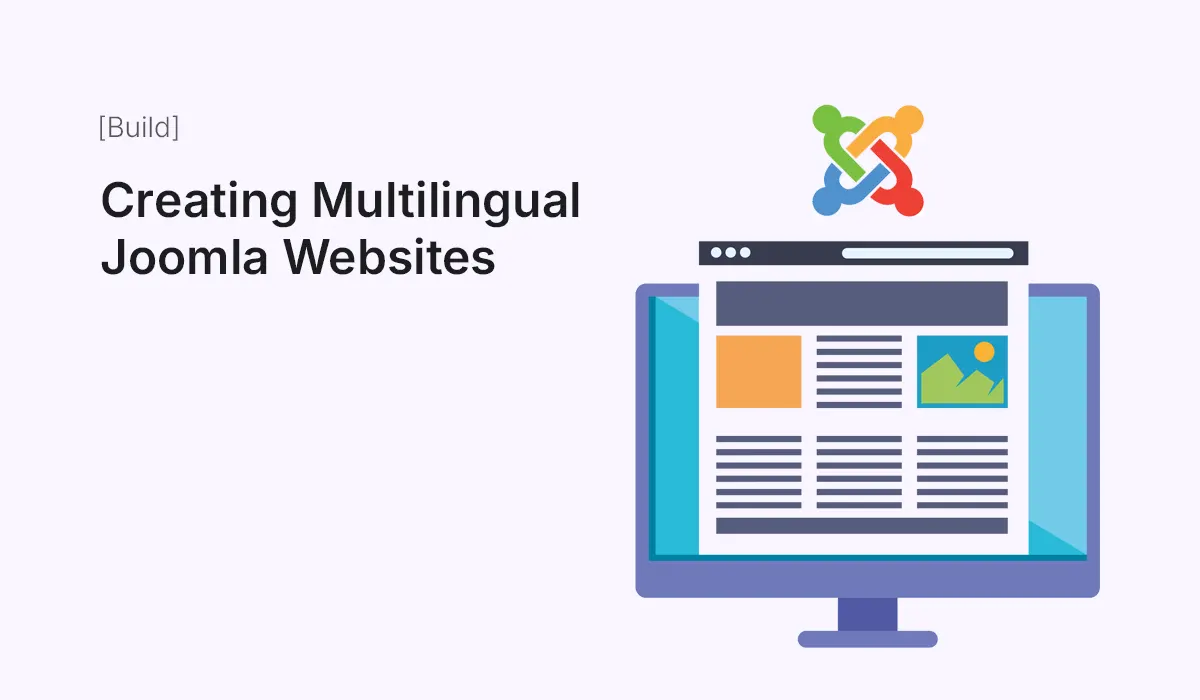Joomla is one of the most popular CMS platforms for building multilingual websites. Unlike many other systems, Joomla comes with built-in multilingual support, meaning you don’t need third-party plugins to create a website in multiple languages. This makes Joomla an excellent choice for businesses, bloggers, and organizations looking to reach audiences worldwide.
In this guide, we’ll walk you through the process of creating a multilingual Joomla website, covering everything from initial setup to advanced customization.
Why Build a Multilingual Joomla Website?
Before we dive into the “how,” let’s look at the “why.”
- Global Reach: Expand your website’s audience beyond one language.
- Improved User Experience: Visitors can browse content in their preferred language.
- SEO Advantage: Multilingual sites often rank better in country-specific searches.
- Brand Trust: Businesses with localized content build stronger customer relationships.
- Built-In Flexibility: Joomla supports multilingual functionality without extra plugins.
Step 1: Prepare Your Joomla Site
Before enabling multiple languages, make sure:
- You have the latest version of Joomla installed.
- Your template supports multilingual layouts (most modern templates do).
- You plan your site structure (decide which languages you’ll support).
Step 2: Install Additional Languages
- Go to System → Install → Languages in your Joomla backend.
- Search for the language you want (e.g., French, German, Spanish).
- Click Install.
Repeat the process for all the languages you need.
Step 3: Enable Language Content
Once installed:
- Navigate to Content → Languages.
- You’ll see a list of installed languages.
- Enable them by publishing each language.
This makes them available for menus, modules, and content.
Step 4: Set Up Language Switcher
A language switcher allows users to change the website language easily.
- Go to Extensions → Modules.
- Create a New Module and select Language Switcher.
- Assign it to a module position in your template (e.g., top menu or sidebar).
- Save and publish.
Now visitors can switch languages directly from your site’s navigation.
Step 5: Configure Multilingual Menus
Each language requires its own menu:
- Create a Main Menu for each language (e.g., Main Menu English, Main Menu French).
- Add menu items for each language version of your pages.
- Assign the correct language to each menu.
Pro Tip: Set up a default homepage for every language, so Joomla knows where to redirect users.
Step 6: Create Multilingual Content
Now, you can start creating pages for different languages:
- Go to Content → Articles → New Article.
- Write your content in the target language.
- Under the Language option, select the correct language.
- Save and assign the article to the corresponding language menu.
Repeat this process for all your pages and translations.
Step 7: Use Associations for Easy Switching
Joomla allows you to associate articles and menus between languages.
For example:
- English “About Us” page → Linked to French “À Propos” page.
- Joomla automatically switches when users change language.
To set this up:
- Edit the article or menu item.
- Under Associations, link it with its translated version.
- Save.
This creates a seamless user experience.
Step 8: Multilingual Modules
Modules also need translations. For example, a contact form or footer.
- Duplicate the module.
- Translate the content.
- Assign it to the corresponding language.
This ensures each version of your site feels complete and consistent.
Step 9: Optimize SEO for Multilingual Joomla
SEO is crucial for multilingual sites. Follow these best practices:
- Use hreflang tags (Joomla adds them automatically if set up correctly).
- Keep URLs language-specific (e.g.,
/en/about,/fr/a-propos). - Translate meta titles and descriptions.
- Submit separate sitemaps for each language in Google Search Console.
- Avoid automatic machine translation—use professional translation for accuracy.
Step 10: Test & Maintain
Once your multilingual site is live:
- Test language switcher functionality.
- Check that menus, modules, and articles display correctly.
- Monitor analytics for language-specific performance.
- Keep translations updated when you add new content.
Advanced Tips
- RTL (Right-to-Left) Languages: Joomla supports RTL layouts for Arabic, Hebrew, etc. Adjust CSS for proper alignment.
- Third-Party Extensions: While Joomla’s multilingual system is powerful, tools like Falang or GTranslate offer additional flexibility.
- Caching: Use Joomla’s caching carefully—enable multilingual caching to prevent wrong-language issues.
Conclusion
Creating a multilingual Joomla website may seem complex at first, but with Joomla’s built-in tools, the process is straightforward. By installing languages, setting up menus, configuring a language switcher, and optimizing for SEO, you can deliver a seamless, localized experience to your audience.
Whether you’re running a business, nonprofit, or blog, a multilingual Joomla site helps you connect with people worldwide—boosting visibility, trust, and growth.
Start building your multilingual Joomla website today and reach a global audience with localized content and seamless navigation!






